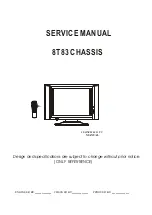
1-2
Cisco ASA Series CLI Configuration Guide
Chapter 1 Configuring Network Object NAT
Licensing Requirements for Network Object NAT
Licensing Requirements for Network Object NAT
The following table shows the licensing requirements for this feature:
Prerequisites for Network Object NAT
Depending on the configuration, you can configure the mapped address inline if desired or you can create
a separate network object or network object group for the mapped address (the
object network
or
object-group network
command). Network object groups are particularly useful for creating a mapped
address pool with discontinous IP address ranges or multiple hosts or subnets. To create a network object
or group, see the
“Configuring Network Objects and Groups” section on page 1-2
.
For specific guidelines for objects and groups, see the configuration section for the NAT type you want
to configure. See also the
section.
Guidelines and Limitations
Context Mode Guidelines
Supported in single and multiple context mode.
Firewall Mode Guidelines
•
Supported in routed and transparent firewall mode.
•
In transparent mode, you must specify the real and mapped interfaces; you cannot use
any
.
•
In transparent mode, you cannot configure interface PAT, because the transparent mode interfaces
do not have IP addresses. You also cannot use the management IP address as a mapped address.
•
In transparent mode, translating between IPv4 and IPv6 networks is not supported. Translating
between two IPv6 networks, or between two IPv4 networks is supported.
IPv6 Guidelines
•
Supports IPv6. See also the
“NAT and IPv6” section on page 1-13
.
•
For routed mode, you can also translate between IPv4 and IPv6.
•
For transparent mode, translating between IPv4 and IPv6 networks is not supported. Translating
between two IPv6 networks, or between two IPv4 networks is supported.
•
For transparent mode, a PAT pool is not supported for IPv6.
•
For static NAT, you can specify an IPv6 subnet up to /64. Larger subnets are not supported.
•
When using FTP with NAT46, when an IPv4 FTP client connects to an IPv6 FTP server, the client
must use either the extended passive mode (EPSV) or extended port mode (EPRT); PASV and PORT
commands are not supported with IPv6.
Model
License Requirement
All models
Base License.
Summary of Contents for 5505 - ASA Firewall Edition Bundle
Page 28: ...Glossary GL 24 Cisco ASA Series CLI Configuration Guide ...
Page 61: ...P A R T 1 Getting Started with the ASA ...
Page 62: ......
Page 219: ...P A R T 2 Configuring High Availability and Scalability ...
Page 220: ......
Page 403: ...P A R T 2 Configuring Interfaces ...
Page 404: ......
Page 499: ...P A R T 2 Configuring Basic Settings ...
Page 500: ......
Page 533: ...P A R T 2 Configuring Objects and Access Lists ...
Page 534: ......
Page 601: ...P A R T 2 Configuring IP Routing ...
Page 602: ......
Page 745: ...P A R T 2 Configuring Network Address Translation ...
Page 746: ......
Page 845: ...P A R T 2 Configuring AAA Servers and the Local Database ...
Page 846: ......
Page 981: ...P A R T 2 Configuring Access Control ...
Page 982: ......
Page 1061: ...P A R T 2 Configuring Service Policies Using the Modular Policy Framework ...
Page 1062: ......
Page 1093: ...P A R T 2 Configuring Application Inspection ...
Page 1094: ......
Page 1191: ...P A R T 2 Configuring Unified Communications ...
Page 1192: ......
Page 1333: ...P A R T 2 Configuring Connection Settings and QoS ...
Page 1334: ......
Page 1379: ...P A R T 2 Configuring Advanced Network Protection ...
Page 1380: ......
Page 1475: ...P A R T 2 Configuring Modules ...
Page 1476: ......
Page 1549: ...P A R T 2 Configuring VPN ...
Page 1550: ......
Page 1965: ...P A R T 2 Configuring Logging SNMP and Smart Call Home ...
Page 1966: ......
Page 2059: ...P A R T 2 System Administration ...
Page 2060: ......
Page 2098: ...1 8 Cisco ASA Series CLI Configuration Guide Chapter 1 Troubleshooting Viewing the Coredump ...
Page 2099: ...P A R T 2 Reference ...
Page 2100: ......







































